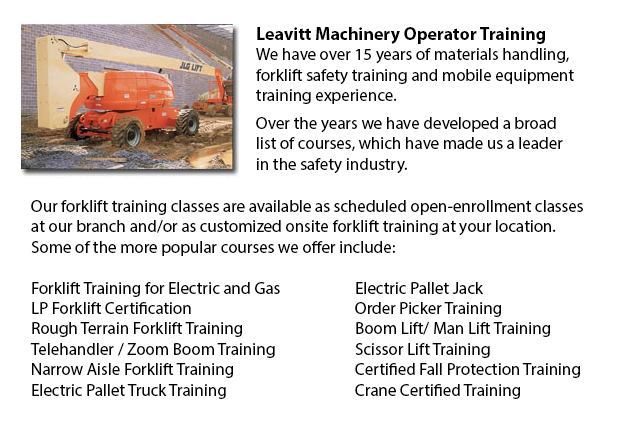
Markham Aerial Platform Training - Aerial jacks are able to accommodate numerous tasks involving high and tricky reaching places. Sometimes utilized to carry out regular repair in buildings with lofty ceilings, trim tree branches, elevate heavy shelving units or patch up phone lines. A ladder might also be used for many of the aforementioned tasks, although aerial hoists provide more security and stability when correctly used.
There are a few distinctive models of aerial hoists available, each being capable of performing moderately different jobs. Painters will sometimes use a scissor lift platform, which is able to be used to get in touch with the 2nd story of buildings. The scissor aerial jacks use criss-cross braces to stretch out and enlarge upwards. There is a platform attached to the top of the braces that rises simultaneously as the criss-cross braces raise.
Container trucks and cherry pickers are another type of aerial hoist. They possess a bucket platform on top of an elongated arm. As this arm unfolds, the attached platform rises. Lift trucks utilize a pronged arm that rises upwards as the handle is moved. Boom hoists have a hydraulic arm that extends outward and elevates the platform. All of these aerial platform lifts require special training to operate.
Through the Occupational Safety & Health Association, also labeled OSHA, training programs are on hand to help ensure the workforce meet occupational standards for safety, system operation, inspection and repair and machine weight capacities. Workers receive certification upon completion of the classes and only OSHA qualified workers should run aerial platform lifts. The Occupational Safety & Health Organization has developed rules to maintain safety and prevent injury while using aerial platform lifts. Common sense rules such as not utilizing this piece of equipment to give rides and ensuring all tires on aerial lifts are braced in order to prevent machine tipping are mentioned within the guidelines.
Sadly, figures expose that in excess of 20 aerial hoist operators pass away each year while operating and almost ten percent of those are commercial painters. The majority of these mishaps were caused by inappropriate tie bracing, therefore a few of these may well have been prevented. Operators should ensure that all wheels are locked and braces as a critical security precaution to stop the instrument from toppling over.
Other suggestions involve marking the surrounding area of the device in an obvious manner to protect passers-by and to ensure they do not approach too close to the operating machine. It is vital to ensure that there are also 10 feet of clearance between any electrical cables and the aerial hoist. Operators of this apparatus are also highly recommended to always have on the proper security harness when up in the air.
-
Markham Forklift Certification Schools
Markham Forklift Certification Schools - Forklift Certification is mandatory in North America. Hence, forklift training programs are essential both for businesses and for people seeking jobs in industries as forklift operators. Forklift training focu... More -
Telehandler Training in Markham
Telescopic handlers normally called telehandlers for short, are a very popular piece of heavy construction equipment. They are commonly utilized in the construction and agricultural trades. These machines have maximum reaching capability and can get... More -
Markham Zoom Boom Training
Markham Zoom Boom Training - Zoom Boom Training is designed to train operators on variable reach forklifts. The objectives of the training are to impart an understanding of the physics of the machinery, and to outline the operator's tasks. This progr... More -
Markham Heavy Equipment Ticket
Markham Heavy Equipment Ticket - A heavy equipment operator will utilize different construction machinery, depending upon the nature of the task at hand. The large equipment are constructed to carry out specific tasks in the most efficient method for... More -
Markham Scissor Lift Training
Markham Scissor Lift Training - When operating a scissor lift, they must be utilized competently so as to protect the safety of the other employees inside the workplace and to protect the safety of the machine. Competent operators are trained to driv... More -
Markham Manlift Operator Training
Markham Manlift Operator Training - The aerial lift or manlift is a specialized kind of hydraulic platform which is designed to raise a person vertically giving it an alternate name of a vertical personnel lift. These machines are widely used for a m... More -
Markham Heavy Equipment Training
Markham Heavy Equipment Training - The two most common kinds of heavy equipment training are classed into the categories of machinery; equipment that is fashioned with tracks and those with rubber tires. The tracked vehicle are heavy duty equipment s... More -
Markham Forklift Safety Training
Markham Forklift Safety Training - Those wanting work in industries that utilize forklifts should undergo a forklift safety training course before becoming a certified operator of a forklift. There are various ways to go about getting forklift safety... More

Forklift Certification Markham
TOLL FREE: 1-888-254-6157
Markham, Ontario
forkliftcertificationmarkham.com
Email Us
About Us


